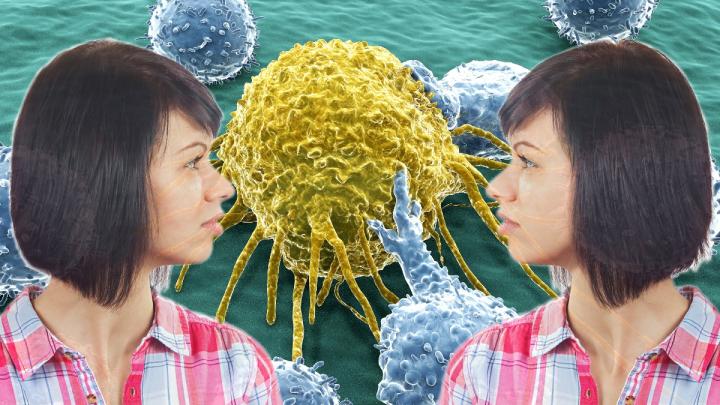A new study of identical and fraternal twins by researchers at the Harvard T.H. Chan School of Public Health offers a clearer picture of how genetics and the environment influence cancer risk within a family.
The researchers found that if one fraternal twin was diagnosed with cancer, the other was more likely to develop cancer as well—but not necessarily of the same type. Moreover, some of the strongest familial associations were seen for less common malignancies, like testicular cancer. The results, published in The Journal of the American Medical Association this week, provide new family-risk estimates for rarer conditions; previous studies (limited by size or follow-up time) were unable to arrive at reliable figures.
When a fraternal twin was diagnosed with cancer, the other sibling’s risk of getting cancer—of any kind—increased by 5 percent. For identical twins, risk increased by 14 percent. Among cases where both siblings developed cancer, more than two-thirds developed different types. “The magnitude of that was a surprise to us,” reports Lorelei Mucci, associate professor of epidemiology and a co-lead author of the study. That finding adds to a growing body of research that shows “some hints that there might be a shared genetic predisposition to develop multiple cancers.” It’s been shown that prostate cancer and melanoma co-occur in families, for example.
The Nordic Twin Cancer Study is the largest familial study of cancer to date. Mucci and investigators at the University of Southern Denmark and the University of Helsinki examined the “twin registers”—health records gathered from more than 200,000 twins in Denmark, Finland, Sweden, and Norway between 1943 and 2010. The team compared the data from identical twins (who share all their genes) and fraternal twins (who, like ordinary siblings, share half) to determine the degree to which genetic factors (heritability) contribute to family risk.
Significant heritability was found in skin melanoma (58 percent), prostate cancer (57 percent), non-melanoma skin cancer (43 percent), ovarian cancer (38 percent), kidney cancer (38 percent), breast cancer (31 percent), and uterine cancer (27 percent). The findings “may be helpful in patient education and cancer-risk counseling,” co-investigator Jaako Kaprio, a professor of genetic epidemiology at the University of Helsinki, suggested in a press release.
Their work updates a 2000 study of the twin registers of three of the Nordic countries. At that time, the authors were unable to distinguish heritable genetic effects from environmental factors. This new research draws on 15 more years of follow-up, additional data (from Norway’s twin register, for example), and new statistical models able to account for other causes of death. The new results are generalizable to Nordic countries, the researchers conclude. But the extent to which they apply to populations elsewhere—especially multiethnic ones—remains unknown.
Mucci, says that, looking ahead, “It will be very interesting to look at... how family risk and heritability occurs across different cancer types.” Comprehensive examination of cancers in various combinations—prostate with respect to the other 22 cancers, for example—may yield useful patterns. And variation in cancer survival, she points out, raises its own set of questions: “Is it random? Is it different lifestyle factors? Or is it genetic factors?”







